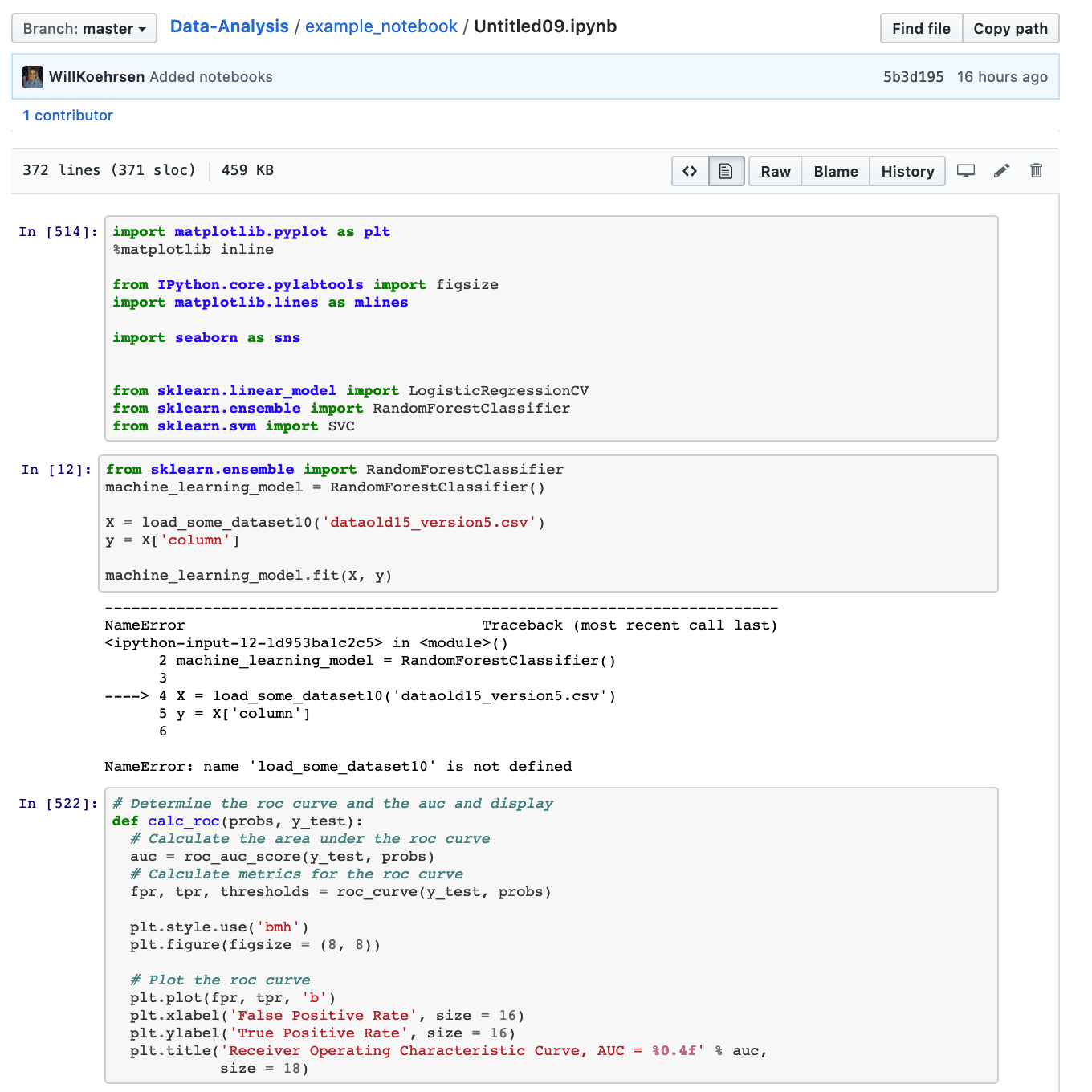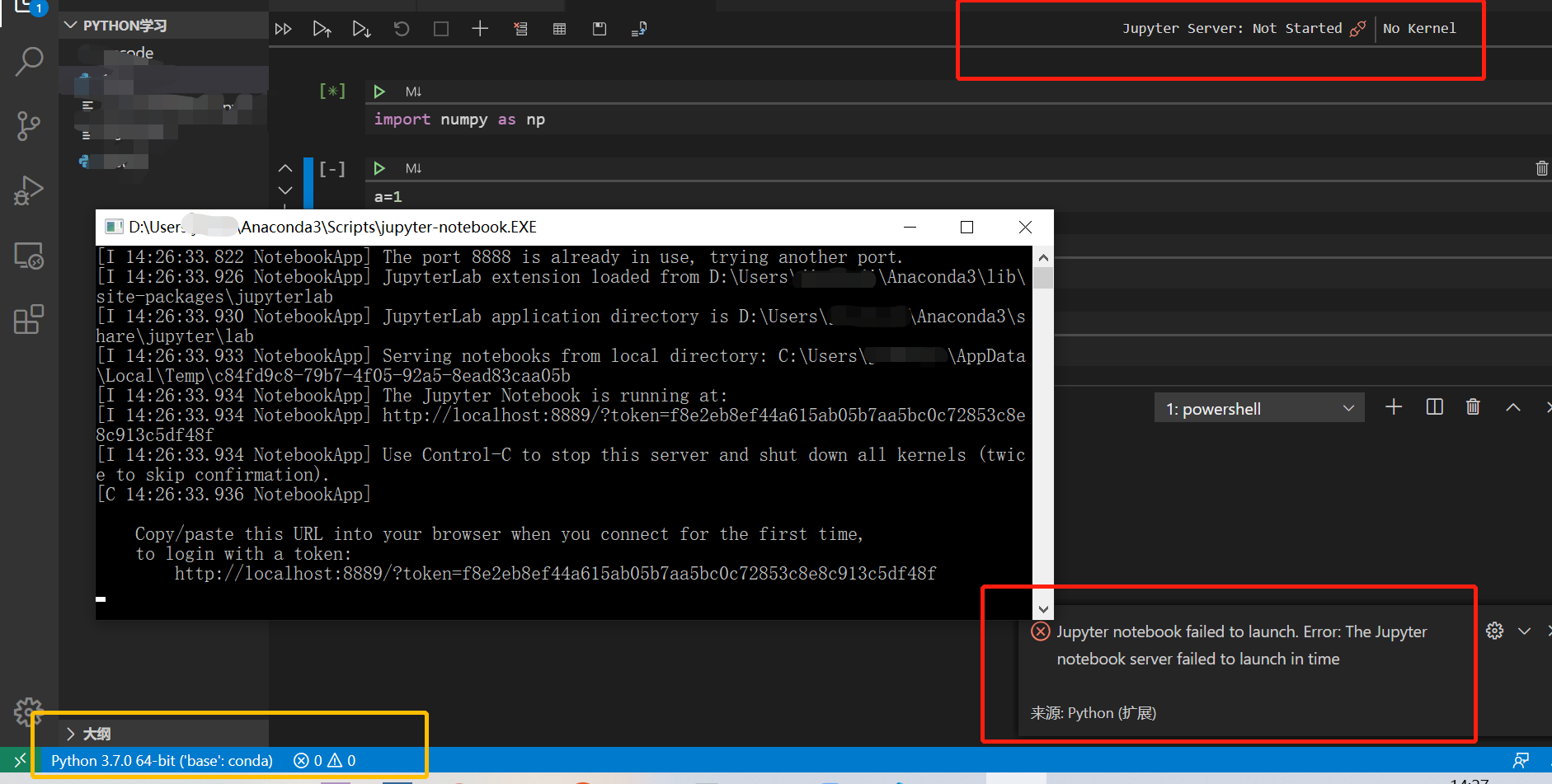

- #Python jupyter notebook e install#
- #Python jupyter notebook e update#
- #Python jupyter notebook e full#
- #Python jupyter notebook e code#

#Python jupyter notebook e update#
py file, it will update the matching cells in the notebook. The opposite is also true, if you edit the. So, for example, if you update the notebook and then manually save it (since you turned off the Autosave feature), Jupytext will refresh the. Jupytext will try to take the most recent version of either file and use it to generate the other. You should note a few things about this file. This format is called the percent format, those special comments ( # %%) denote cells for the notebook. In my case, that means the file jupyter_git_example.py is created. If you want to mostly work in Jupyter notebook and just check in the script file when you are done, you can leave Autosave enabled.Īs soon as the notebook is paired with a script output, the file will be created in the same directory as the notebook. Check the values as shown below to sync your notebook into a Python file: Jupytext adds menu options, select as shown to follow the exampleįirst, if you want to work mostly in a script or Markdown file (I’ll talk about all the formats in a bit), you should turn off the Jupyter Autosave feature. When you do, you should see a Jupytext entry in the File menu.

After you setup a Jupyter notebook (or JupyterLab) environment with matplotlib installed, you can open the notebook in Jupyter notebook (run jupyter notebook). This is just a simple notebook that includes a plot using matplotlib. In the previous article on notebook version control, we used this notebook as an example. The easiest way to see how Jupytext works is to start with a simple example. If so, restart your process to pick up the Jupytext extension in the front end. You’ll most likely be using the Jupyter Notebook or Lab environment as well.

#Python jupyter notebook e install#
Or if you’re using anaconda: conda install jupytext -c conda-forge We’ll look at a few examples of how Jupytext supports these three scenarios. For example, if source is stored in a more common format like a Python file, many tools are available to check code, including linters and formatters/beautifiers. You also may want to work on notebooks in a terminal (maybe over an SSH connection) where you don’t have a web browser handy.Ī third reason is to be able to work more effectively with notebooks and the notebook content, specifically the Python source code.
#Python jupyter notebook e code#
Maybe you write and test bits of code in an IPython session and prefer that to a notebook where code cells can easily get run out of order.
#Python jupyter notebook e full#
Or perhaps you use a text editor like Vim or Emacs and prefer the full power of your favorite editor. Maybe you are most comfortable writing code in an IDE like P圜harm or Visual Studio Code. All of these may change and pollute your diff and make versioning a challenge.Ī second reason to consider Jupytext is if you prefer to work outside the standard Jupyter notebook authoring environments. ipynb file) contains code, output, and metadata. Using a specialized diff tool like nbdime will make the diffs easier to navigate, but in the end, the single notebook file (i.e. My article on version control describes the situation and gives some background and good solutions for this issue, but they may not be perfect for every situation. First, you may be struggling with properly doing version control in your notebooks. There are several good reasons to consider using Jupytext. It also allows for changes in these other documents to be synced back to the notebook file (the. Jupytext is a Jupyter plugin that automatically saves Jupyter notebooks in a variety of human readable (and editable) outputs. Because of this, it can produce messy diffs in your version control system. But under the hood, a Jupyter notebook is just a JSON document, and the content of that document is often not very human readable. Many IDEs support Jupyter notebooks natively, and the Jupyter notebook server and JupyterLab environments are effective ways to write notebooks. Jupyter notebooks are a great way to interactively write Python code and include documentation, program output, and data visualization inline with the code that produced it.


 0 kommentar(er)
0 kommentar(er)
